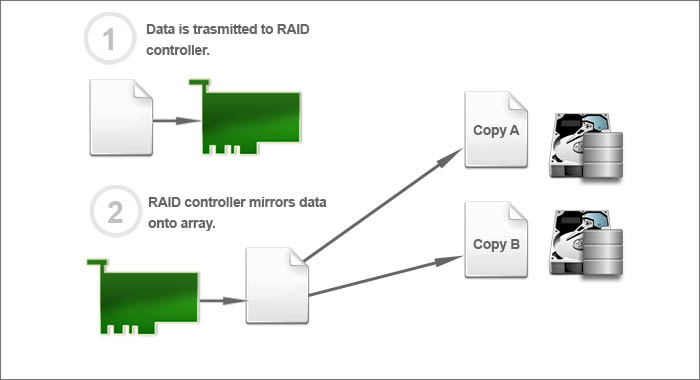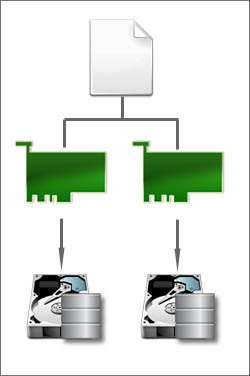 |
 |
 |
RAID Implementation Types
 RAID 1
RAID 1
RAID 1 employs mirroring, and sometimes duplexing for added performance. It requires at least 2 hard disks ideally similar to each other, and provides a fairly fast recovery period.

- Data is first sent from server to the RAID controller
- The data is then sent to the array. For example, data set ABCD is sent to array 1 and mirrored to array 2. Data set EFGH is sent to array 3 and mirrored to array 4 and so on.
![]()
This diagram above shows RAID 1 with strictly mirroring. It already provides a fairly high fault tolerance. However, there is another added level of fault tolerance in RAID 1, which is duplexing.
 |
RAID 1 with duplexing |
In duplexing, individual raid controllers are used to control each array. Array has it's own raid controller, array 2 has it's own raid controller and so on.
Comparatively,, there is high fault tolerance, costs which can range from cheap to very expensive, poor read performance but better write performance compared to other RAID levels.However, the big disadvantage is that your storage capabilities are halved, as mirroring copies the same set of data onto both disks.
RAID 1 is popular in finance based situations, such as in accounting, small servers and anyone who want a fault tolerance with minimal hassle. The costs can also be very minimal, unless a huge number of arrays is set up, and duplexing is implemented.


